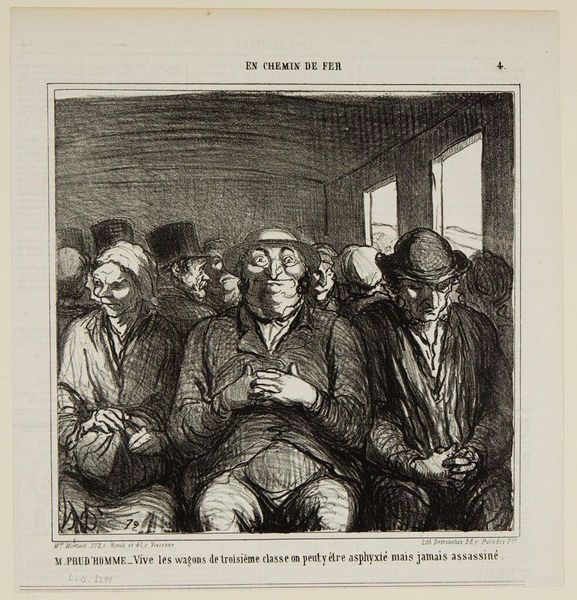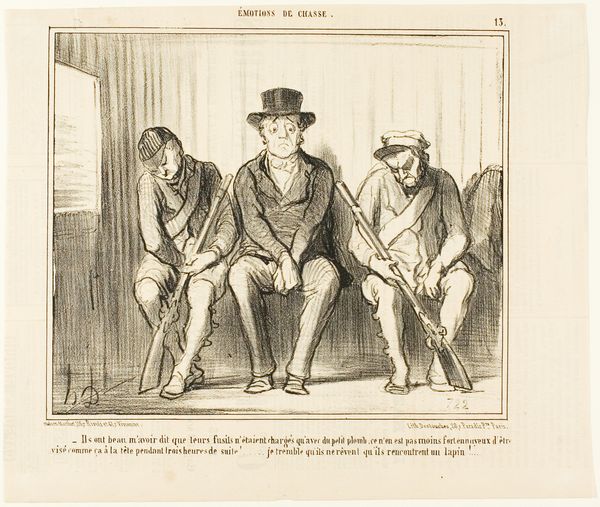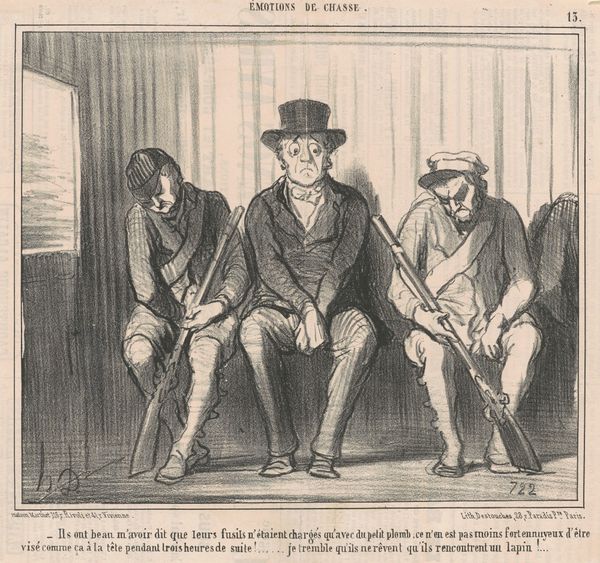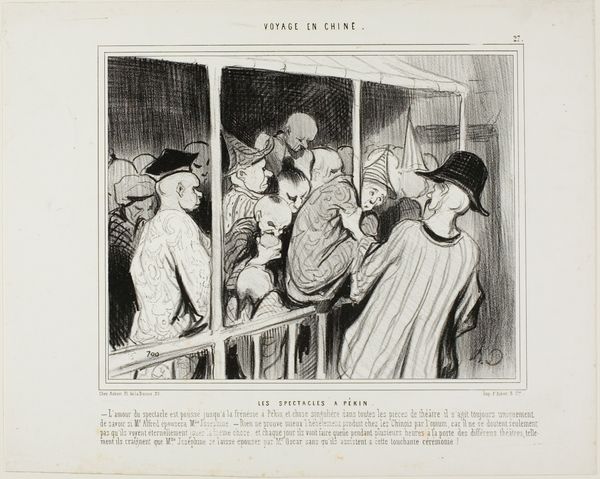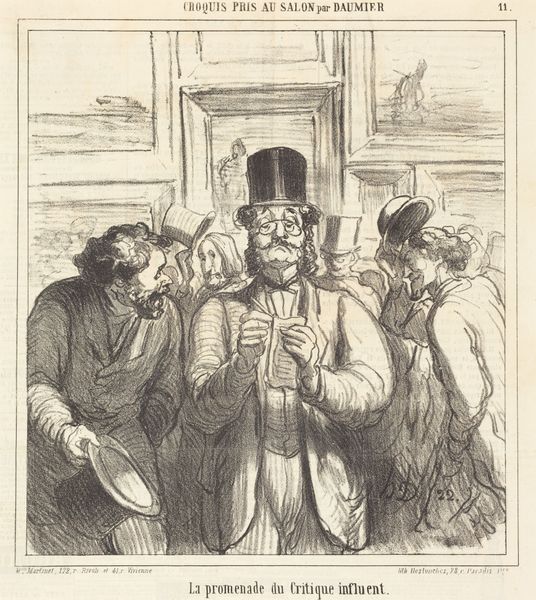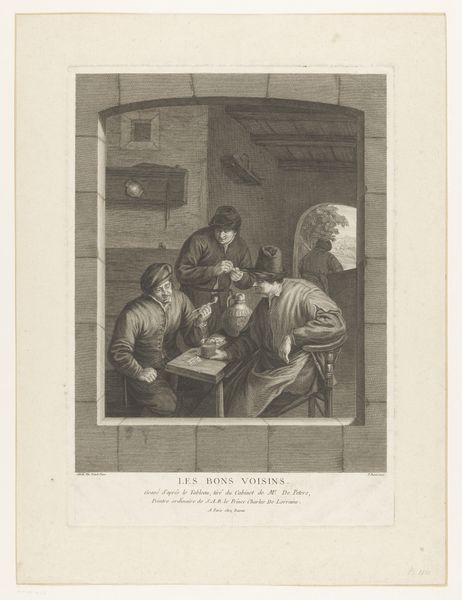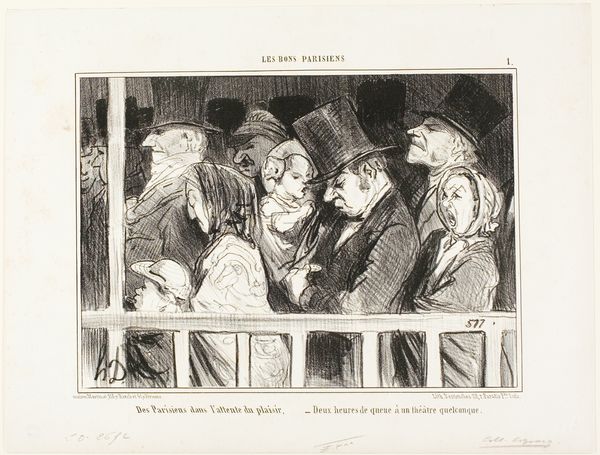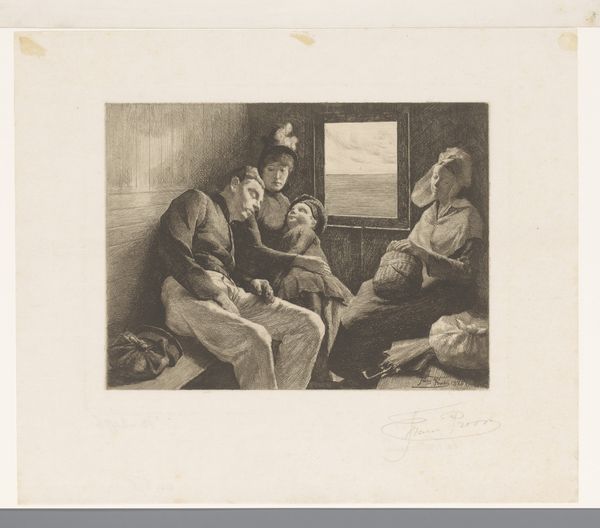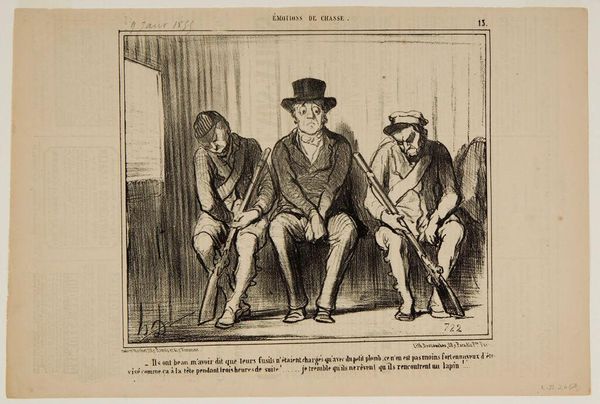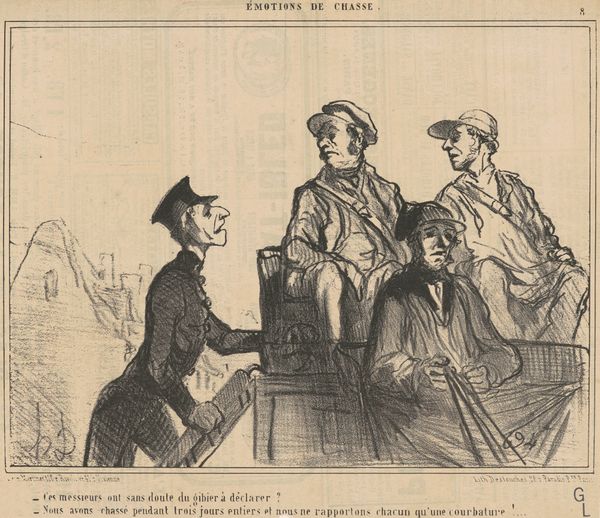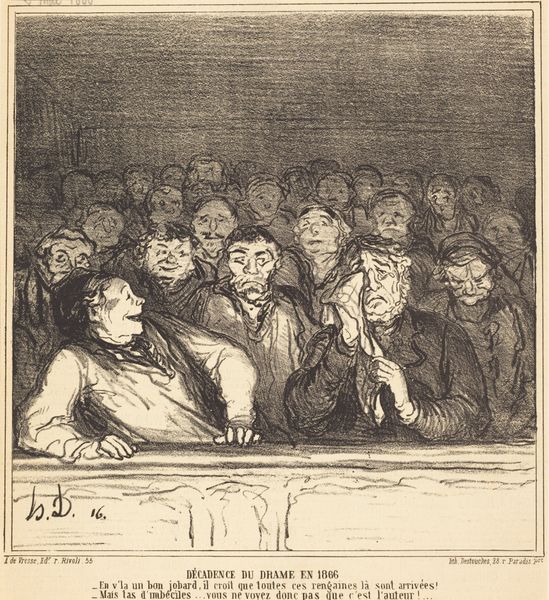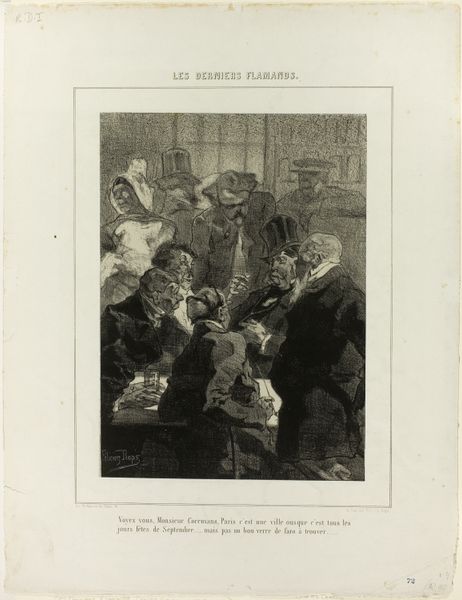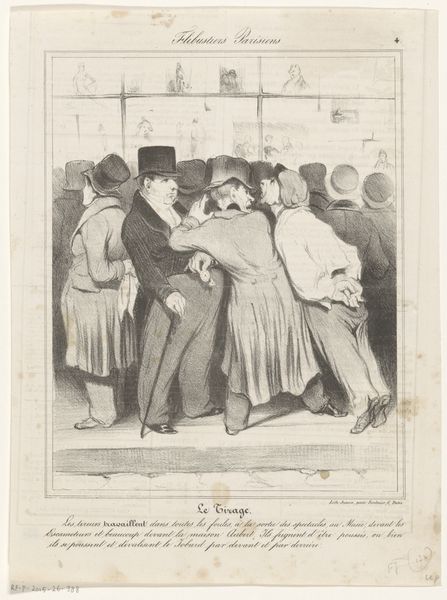
Dimensions: height 290 mm, width 288 mm
Copyright: Rijks Museum: Open Domain
Editor: Here we have Honoré Daumier’s lithograph, "Mensen zij aan zij in een treinwagon," likely from the 1860s. I’m struck by the composition—the cramped figures and heavy lines seem to evoke a real sense of discomfort and the close proximity of people in third-class train travel. How do you read this image, focusing on its formal elements? Curator: Certainly. Observe how Daumier manipulates line and form to convey a specific emotional quality. The figures are tightly packed, almost overlapping, creating a sense of claustrophobia. Consider the hatching technique; it’s dense and varied, giving volume to the forms but also contributing to the overall impression of confinement and unrest. Editor: That’s interesting. The faces too—their expressions, rendered so vividly through the lithographic technique, are all individualized and yet, collectively, they suggest weariness. Curator: Precisely. Note the contrasting directions of the lines used to define each figure. This variety disrupts any sense of unity, emphasizing the discomfort of disparate individuals sharing a confined space. The light, too, is carefully considered, with strategically placed highlights directing our gaze to key details. Editor: I see what you mean about the use of line, now that you point it out. Does this emphasis on form over detail reflect anything about the printmaking process? Curator: The printmaking process definitely informed Daumier’s method. He was interested in the interplay between shadow and texture that lithography facilitates, and he exploited these characteristics to create a rich viewing experience that also underscored a central narrative about industrialization, social mobility, and contemporary life. Editor: I hadn't thought of it that way. This close formal analysis has really made me rethink how Daumier’s technique amplifies the emotional impact of the artwork. Curator: Indeed, by carefully attending to its visual construction, we see how the formal and contextual elements converge in this poignant snapshot of a rapidly changing society.
Comments
No comments
Be the first to comment and join the conversation on the ultimate creative platform.
